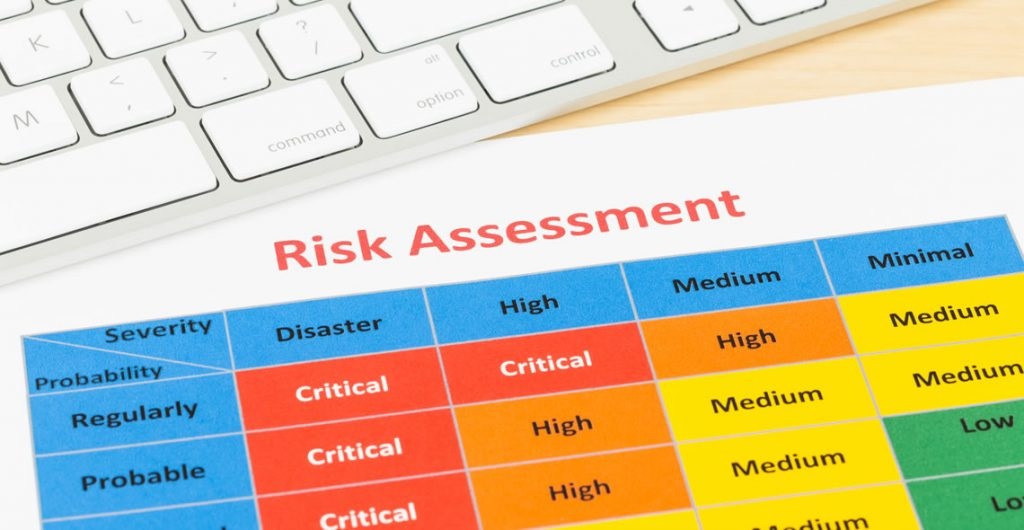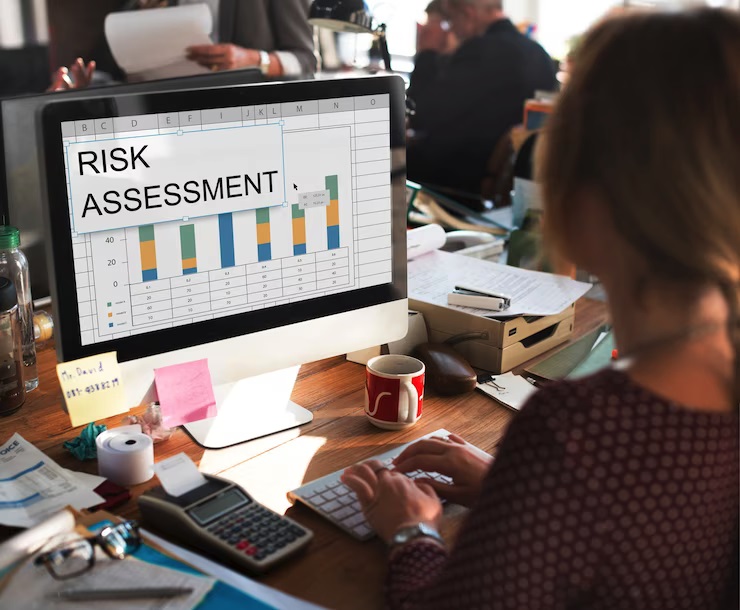To Ensure Your Business Is Successful, It Is Crucial That You Prioritize Risk Assessment.
It is essential for any business to use risk assessment methodologies in order to be successful. In order to effectively prevent problems from arising, it is vital to be familiar with the types of risk assessment and to know how they can help you identify, prioritize, and manage risks before a problem arises. I would like to introduce you to 6 types of chemical risk assessment methodologies and explain how you can use them in your organization to make the right decision.
A qualitative risk analysis methodology can be used to analyze risks
Qualitative risk analysis is a method of assessing the potential threats or risks that may exist in a particular organization. An example of this type of methodology would be to categorize each risk based on its probability as well as its impact, categorizing them as high, medium, or low priority risks. A compliance risk assessment allows organizations to prioritize risks so that they can manage them effectively and efficiently as soon as they become apparent.
The quantitative method of risk analysis can be summarized as follows
The quantitative risk analysis methodology is a more detailed approach than qualitative risk analysis because it takes into account both financial costs and time frames associated with each potential threat or risk. Using a more data-driven approach in this case, organizations assign a numerical value to each risk based on the probability and impact of each risk by assigning a numerical value based on the probability and impact of each. By using this type of approach, organizations can make more informed decisions when it comes to determining which risks need to be addressed first or whether they need to be avoided altogether in the future.
A methodological approach to identifying risks
It is one of the most important aspects of risk identification methodologies to examine all areas related to the business operations of an organization to identify potential threats or risks that might exist within the surrounding environment of the organization. It is a type of methodology that involves analyzing processes, procedures, policies, systems, resources, personnel, etc. It is important to examine the current state of security in order to determine if gaps exist which may pose a potential threat or issue down the road. In turn, organizations use this information to create strategies for mitigating these risks before they occur in order to avoid them in the first place.
Developing Risk Assumption Methodologies
When an organization decides to accept certain identified risks, despite their potential negative impact on its operations or bottom line profits, the organization uses the risk assumption methodology to decide whether the risk is worth undertaking. It is important for organizations to determine the cost/benefit ratio between accepting certain risks and avoiding them. This will allow them to determine if taking on a particular level of risk will result in greater profits or improved efficiency over the long run, or if not, will result in higher profits. The Methodology of Risk Avoidance
The process of risk avoidance includes identifying potential threats or issues within the organization's environment and developing strategies for avoiding them entirely. For instance, outsourcing certain tasks instead of performing them internally can reduce the amount of liability exposure that could result from legal issues that may arise when a business performs these tasks within its own business environment.
Using a Risk Transfer Methodology, one can transfer the responsibility for managing certain identified risks from an entity (the originator) to another entity (the transferee) based on the transfer process. It is often the case that organizations undertake this type of strategy in order to minimize any possible losses related to their exposure to the specific risks they are taking on while also permitting them to access whatever benefits they may be able to secure should those risks ever materialize in the future (such as security, productivity, etc.). The gram. As a result, profits increased).
Choosing the right type of risk assessment methodology for your organization depends on several factors such as the cost/benefit ratio associated with each option; the timeline constraints; the availability and capabilities of your personnel; etc. Nevertheless, there are several factors to take into account before making a decision. You should spend some time upfront researching all your options in order to be able to make a wise decision regarding which strategy is most likely to provide your organization with the best results over time, while protecting that organization from possible liabilities in relation to losses that may arise if you take on certain risks over others. The importance of knowing how different types of assessment methodologies work will help you to not only deal with current threats, but also anticipate future threats so you can give your business an edge over your competitors.
Risk Assessment Establishing a Risk Management Program
A risk management program needs to be established after identifying the risks that have an impact on your organization. This is done by conducting a risk assessment and identifying the potential impacts of those risks. Next, you'll need to establish controls that will help mitigate those risks, so you'll need to have key decision-makers involved in the process at the start, so they can identify and mitigate those risks as soon as possible. In addition to that, it is also important to have documentation on hand so that you can review and update your program as required.
An overview of how a risk assessment should be conducted
A risk assessment can be a daunting task to undertake, especially when you don't know what to expect. You may find the following tips helpful as you prepare to begin your journey.
TURNING ONE. Analyze your organization to identify the elements that make it up as well as the risks that could affect them in any way. An important part of this approach is identifying which assets, systems, individuals or locations are most vulnerable to harm from cybercrime. It would therefore be worthwhile to go through each element and determine what could happen if there was an incident (or situation) that put them at risk.
Two to three. Assess how likely these events are to occur on a regular basis and how severe their consequences would be on the assets, locations, and persons within the organization as a whole.
In the negative 5. A grade of 6. In -7. There are 8.
Risk assessment templates and checklists
Risk assessment templates and checklists can be found on the internet where they can be downloaded. As a result of these tools, you can carry out your own risk assessment or you can use them to do a risk assessment for a particular project or organization, depending on what you would like to accomplish. These samples can also be used to create your own customized document that is based on these samples.
Performing a formal risk assessment is a structured process that helps identify potential threats and opportunities for an organization, assess their impacts, take appropriate steps to reduce or eliminate those risks and opportunities (if possible), and update plans in accordance with those assessments. The following are some aspects of a comprehensive plan that should be included.
The management process is outlined in an overview below
An overview of the key players involved in implementing each step is given below
As part of the management process, there are several types of information that are required from each role
The assessment of risk is one of the most important elements of any decision-making process when it comes to prioritizing projects, completing cybersecurity audits, or handling incidents.
Assessing risks is an essential part of determining the priority of projects, conducting cybersecurity audits, and responding to incidents, as it contributes to the decision-making process. You can determine whether a threat is likely to occur, and how it will impact your organization, by using them.
The following are some of the things you can do with risk assessments
Establish priority in projects byidentifying what parts or areas of the project need additional resources or attention in the beginning.
Conduct a cyber security audit to identify weak points that could be exploited by hackers or other malicious actors to gain access to your information and for malicious purposes.
The best way to respond to an incident is to have a clear understanding of what the potential impact will be on your business, and what steps you should take if the incident occurs.
Sevron Ltd. provides risk mitigation solutions to help our customers make better decisions.
Sevron Ltd offers a comprehensive COSHH 365 system designed to help companies manage their compliance with COSHH regulations and protect their employees from potential harm. The effectiveness of their risk assessments ensures that businesses remain compliant and reduce liability by identifying chemical risks in the workplace and taking the appropriate steps to prevent them. There are a number of features included in Sevron's solution, including the Inventory of Safety Data Sheets, Risk Assessment Management, Incident Management Solution, and Managed Safety Data Sheets (MSDS). You will also save time, money, and laborious administration tasks when you use Sevron COSHH 365 to manage your safety and health requirements. We ensure your business is in full compliance with the legislation and that you are able to protect those working in your workplace from potential harm and illness through our service. It is essential to keep employees safe and compliant with COSHH regulations and that is why Sevron offers a comprehensive COSHH 365 system that can answer all of these questions for you. They can be reached at +44(0)1772 450 920. For more information, please contact them via the website www.sevron.co.uk/contact-us.

